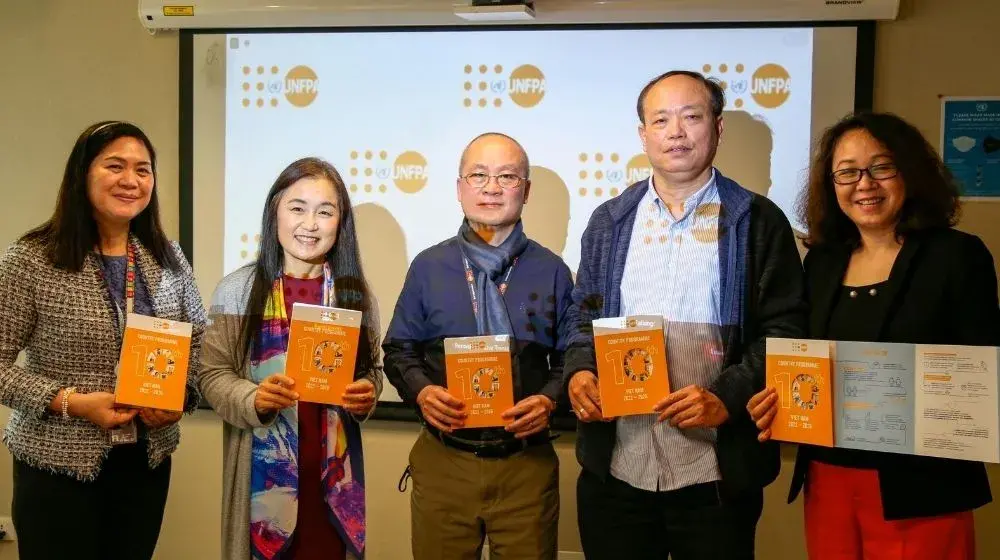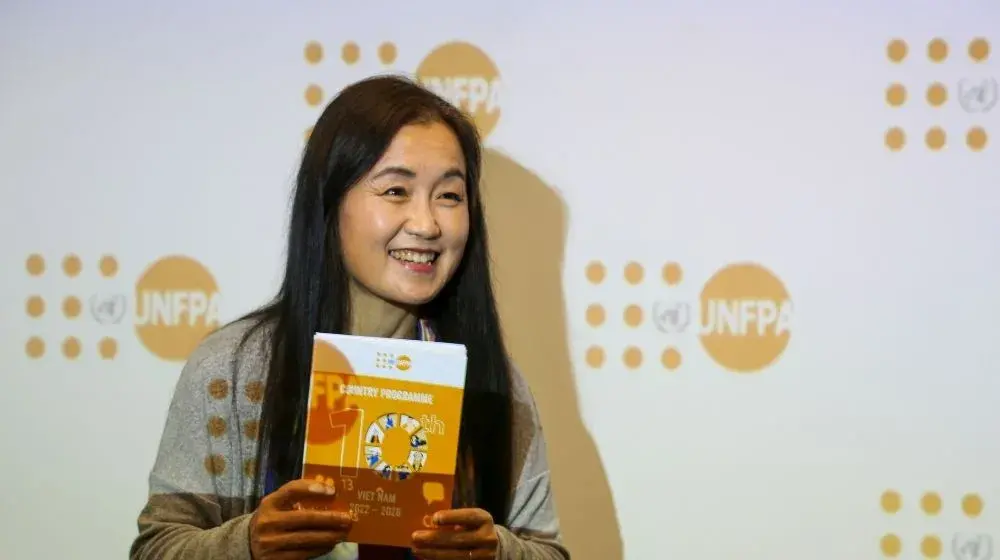Excellency Mr. Tran Anh Tuan, Vice Minister of Home Affairs;
Representatives from Provincial People’s Committees of 30 Central and Southern provinces;
Representatives from Provincial Departments of Home Affairs;
Youth Union of Lam Dong province;
Young people; and
Ladies and Gentlemen,
It is my pleasure to be here today in Da Lat city for the dissemination of the Youth Law 2020, which was approved by the National Assembly on 16 June this year.
On 10 September 2020, I was honored to be invited by Excellency Mr. Tran Anh Tuan, Vice Minister of Home Affairs, to disseminate the revised Youth Law to the representatives of the Communist Party Office, the Government Office, Line Ministries, and Central Organizations.
The revised Youth Law 2020 creates a legal enabling environment for Provincial People’s Committees, line Ministries, and youth organizations to address youth development issues within their assigned technical functions and responsibilities at the local level.
It also highlights the critical role of the Ministry of Home Affairs at the national and provincial levels in implementing the Youth Law as well as youth-related initiatives and activities with the objective of achieving Viet Nam’s social-economic development and Sustainable Development Goals (SDGs) by 2030.
We highly appreciate the political will and commitment on youth affairs of the Communist Party and the Government of Viet Nam at all levels, and we must work firmly together to ensure the linkage between the approved Youth Law and its implementation.
To realise this, I would like to highlight a few issues:
First, the Provincial People Committees (PPCs) play a crucial role in ensuring the full and effective implementation of the Youth Law and Youth-related Policies, as well as the integration of youth affairs in the provincial social-economic plans. It requires a close collaboration mechanism among technical departments under the coordination of the Department of Home Affairs (DOHA) and the management of Provincial People’s Councils, to identify local priorities in youth development and allocate provincial budgets for addressing youth development in a cost-effective way. Here, PPC leaders must be fully oriented to the rights of young people and the need for integrating youth affairs in the provincial social-economic plans.
Second, as DOHA’s are the state management bodies for the youth development affairs at the local level, they support and provide advice to PPCs in making local decisions on local youth development programmes. However, in the current organization structure of DOHA in many provinces, there is still a lack of human resource to do this critical work.
DOHA should be able to effectively fulfill their functions in coordinating technical departments such as DOH, DOET, and DOLISA in the provincial youth development plans. To do so, DOHA’s need to review the current human resources in relation to youth work in the provinces and ensure the allocation of adequate human resources. The assigned staff need to have regular training and exchange experiences with other provinces.
Third, it is important to remember that the impact of the Youth Law and Youth-related Policies is monitored through youth development indicators, also within ASEAN youth development framework including ASEAN youth development index. And thus, timely and adequately data collection, data analysis, and reporting on local youth development from provinces are vital for evidence-based decision making at provincial and national levels. Viet Nam’s progress on youth development is being compared with other ASEAN countries, and we trust that given Viet Nam’s current leadership in ASEAN, Viet Nam can spearhead and share its experience with other countries in the region.
Finally, we strongly advise PPCs and line provincial departments to provide platforms for dialogue with young people and discuss the issues which affect youth in provinces. At the national level, MOHA created such a platform for the process of developing and finalizing the Youth Law, and this was exemplary. We trust that Vietnamese youth can make significant contributions to decision-making and providing specific, unique, and modern solutions that are workable for them at the provincial and community levels. Viet Nam’s young people have a lot of potential to contribute to the country’s sustainable development.
Ladies and gentlemen,
Viet Nam is going through a demographic transition. We have the largest population of young people ever in Viet Nam’s history, and this is a very unique opportunity to tap into the demographic dividend. Strategic investment has to be made now in young people to maximize socio-economic growth of the country, particularly under the current Covid-19 context.
We know that young people are not homogenous. There is not one solution that fits all. Therefore, provinces need to try to cater for specific needs of diverse sub-groups of the youth population, such as youth with disabilities, ethnic minority youth, young migrant workers, women and girls, and LGBTI youth.
Let me assure you that UNFPA is fully committed to supporting the Government of Viet Nam at all levels to ensure that the potential of Vietnamese young people is fully fulfilled.
I thank you for your attention and participation.





